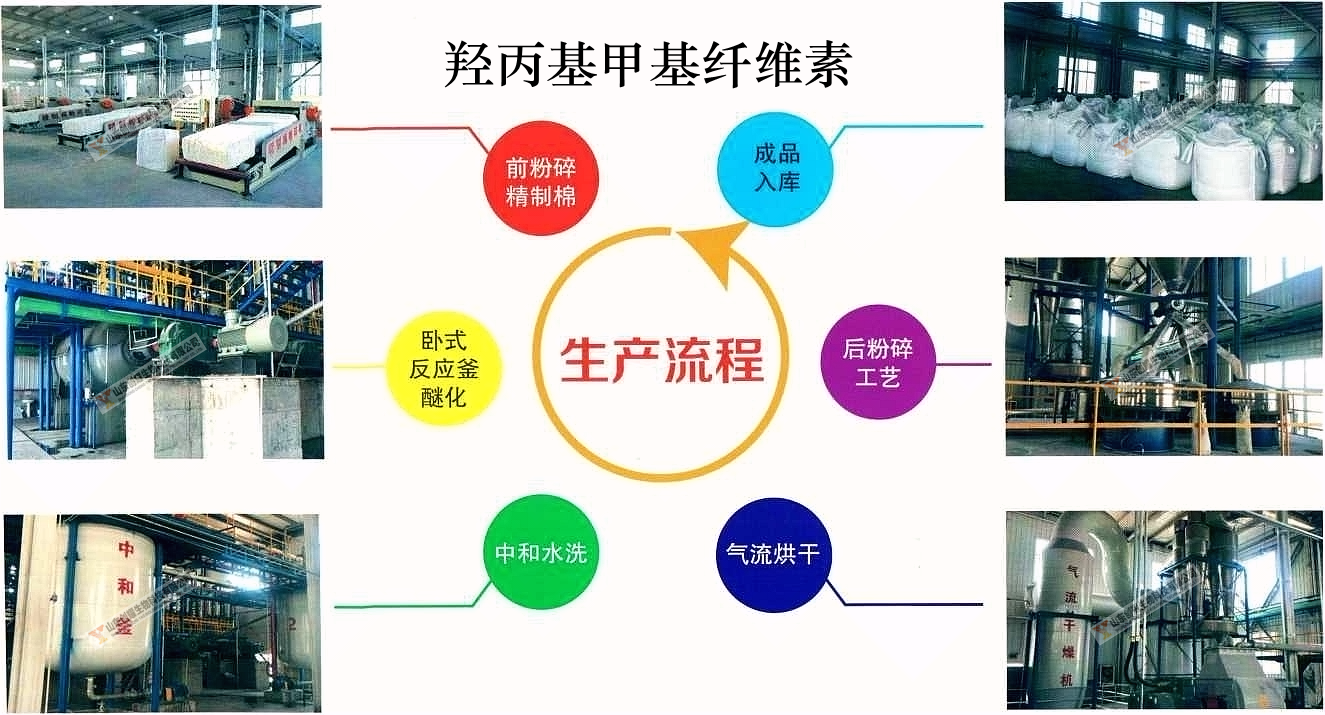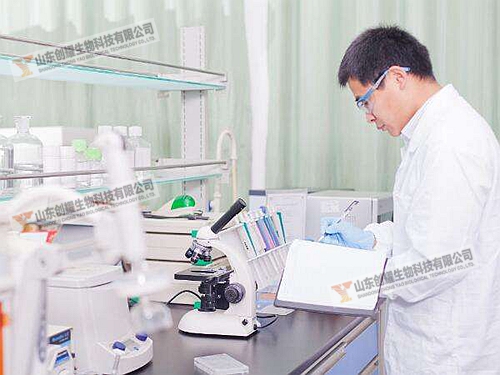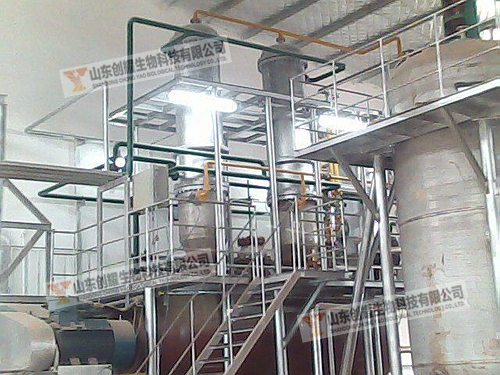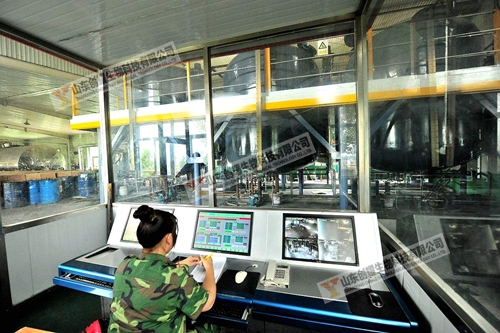Comprehensive explanation of hydroxypropyl methylcellulose
Hydroxypropyl methylcellulose is a synthetic polymer prepared by chemical modification with natural cellulose as raw material. Hydroxypropyl methylcellulose is a derivative of natural cellulose. The production of hydroxypropyl methylcellulose is different from synthetic polymers. Its basic material is cellulose, a natural polymer compound. Due to the special structure of natural cellulose, cellulose itself has no ability to react with etherifying agent. However, after the treatment of swelling agent, the strong hydrogen bond between and within the molecular chain is destroyed, the activity of hydroxyl is released into reactive alkali cellulose, and hydroxypropyl methylcellulose is obtained by the reaction of etherifying agent - OH group to - or group.

The properties of hydroxypropyl methylcellulose depend on the type, quantity and distribution of substituents. The classification of hydroxypropyl methylcellulose is also based on the type of substituents, etherification degree, solubility and related application properties. According to the type of substituents in the molecular chain, it can be divided into single ether and mixed ether. MC we usually use is single ether and HPMC is mixed ether. Methyl hydroxypropyl methylcellulose MC is the product of the substitution of hydroxyl group on the glucose unit of natural cellulose by methoxy group, and the structural formula is [c o h7o2 (OH) 3-h (OCH3) H] X. hydroxypropyl methyl hydroxypropyl methylcellulose HPMC is the product of the substitution of one part of hydroxyl group on the unit by methoxy group and the other part by hydroxypropyl group, The structural formula is [c6h7o2 (OH) 3-m-n (OCH3) m [och2ch (OH) CH3] n] X. In addition, there are hydroxyethyl methyl hydroxypropyl methyl cellulose HEMC, which are the main varieties widely used and sold in the market.
In terms of solubility, it can be divided into ionic type and non-ionic type. Water soluble non-ionic hydroxypropyl methyl cellulose is mainly composed of alkyl ether and hydroxyalkyl ether. Ionic CMC is mainly used in synthetic detergent, textile printing and dyeing, food and oil exploitation. Non ionic MC, HPMC and HEMC are mainly used in building materials, latex coatings, medicine, daily chemistry and so on. It is used as thickener, water retaining agent, stabilizer, dispersant and film-forming agent.

Water retention of hydroxypropyl methylcellulose:
Hydroxypropyl methylcellulose plays an irreplaceable role in the production of building materials, especially dry mixed mortar, especially in the production of special mortar (modified mortar).
The important role of water-soluble hydroxypropyl methylcellulose in mortar mainly has three aspects: one is excellent water holding capacity, the other is the influence on mortar consistency and thixotropy, and the third is the interaction with cement.
The water retaining effect of hydroxypropyl methylcellulose depends on the water absorption of base course, the composition of mortar, the layer thickness of mortar, the water demand of mortar and the setting time of setting material. The water retention of hydroxypropyl methylcellulose itself comes from the solubility and dehydration of hydroxypropyl methylcellulose itself. As we all know, although cellulose molecular chain contains a large number of OH groups with strong hydration, it is not soluble in water because cellulose structure is highly crystalline. The hydration ability of hydroxyl group alone is not enough to pay for the strong intermolecular hydrogen bond and van der Waals force. Therefore, it only swells and does not dissolve in water. When a substituent is introduced into the molecular chain, not only the substituent destroys the hydrogen chain, but also the hydrogen bond between chains is destroyed due to the wedging of adjacent substituents. The larger the substituent, the greater the distance between molecules. The greater the hydrogen bond breaking effect is, after the cellulose lattice is expanded, the solution enters, and hydroxypropyl methylcellulose becomes water-soluble to form a high viscosity solution. When the temperature increases, the hydration of polymer decreases, and the water between chains is expelled. When the water is fully used, the molecules begin to aggregate and form a three-dimensional network structure. The factors affecting the water retention of mortar include hydroxypropyl methylcellulose viscosity, addition amount, particle fineness and service temperature.
The higher the viscosity of hydroxypropyl methylcellulose, the better the water retention performance and the viscosity of polymer solution. Depending on the molecular weight (degree of polymerization) of the polymer, it is also determined by the molecular structure, chain length and chain morphology. The type and quantity distribution of substituents also directly affects its viscosity range. [ η]= Km α
[ η] Intrinsic viscosity of polymer solution
M polymer molecular weight
α Polymer characteristic constant
K viscosity solution coefficient
The viscosity of polymer solution depends on the molecular weight of polymer. The viscosity and concentration of hydroxypropyl methylcellulose solution are related to its application in various fields. Therefore, each hydroxypropyl methyl cellulose has many different viscosity specifications, and the adjustment of viscosity is mainly realized through the degradation of alkali cellulose, that is, the breaking of cellulose molecular chain. The greater the amount of hydroxypropyl methylcellulose added to the mortar, the better the water retention performance, the higher the viscosity, and the better the water retention performance.
For particle size, the contact between the hydroxypropyl methyl cellulose and the water after large particles is dissolved immediately, and the gel forms the gel to wrap the material to prevent the water molecules from continuing to penetrate. Sometimes, long time stirring can not be evenly dispersed and dissolved, forming a muddy flocculent solution or caking. It greatly affects the water retention of hydroxypropyl methyl cellulose, and solubility is one of the factors to select hydroxypropyl methyl cellulose.

Thickening and thixotropy of hydroxypropyl methylcellulose
The second effect of hydroxypropyl methylcellulose thickening depends on the polymerization degree of hydroxypropyl methylcellulose, solution concentration, shear rate, temperature and other conditions. The gelation characteristics of solutions are unique to alkyl cellulose and its modified derivatives. The gelation characteristics are related to the degree of substitution, the concentration of solution and additives. For hydroxy alkyl modified derivatives, the gel properties are also related to the degree of hydroxyl alkylation modification. MC and HPMC with low viscosity can prepare 10% - 15% solution, MC and HPMC with medium viscosity can prepare 5% - 10% solution, while MC and HPMC with high viscosity can only prepare 2% - 3% solution. Generally, the viscosity classification of hydroxypropyl methylcellulose is also based on 1% - 2% solution. High molecular weight hydroxypropyl methylcellulose has high thickening efficiency. In the same concentration solution, different molecular weight polymers have different viscosities. The relationship between viscosity and molecular weight can be expressed as follows[ η]= two point nine two × 10-2 (DPN) 0.905, DPN is the average degree of polymerization, with high reactivity. Low molecular weight hydroxypropyl methylcellulose can reach the target viscosity only by adding more amount. Its viscosity has little dependence on shear rate. High viscosity reaches the target viscosity and requires less addition. The viscosity depends on the thickening efficiency. Therefore, to achieve a certain consistency, we must ensure a certain amount of hydroxypropyl methylcellulose (solution concentration) and solution viscosity. The gel temperature of the solution decreased linearly with the increase of the concentration of the solution, and gelatinized at room temperature after a certain concentration. The gelation concentration of HPMC at room temperature is relatively high.
The consistency can also be adjusted by selecting particle size and hydroxypropyl methylcellulose with different degrees of modification. The so-called modification is to introduce hydroxyalkyl with a certain degree of substitution into the skeleton structure of MC. By changing the relative substitution values of the two substituents, that is, the DS and MS relative substitution values of methoxy and hydroxyalkyl. By changing the relative substitution values of the two substituents, the requirements of various properties of hydroxypropyl methylcellulose are obtained.
The relationship between consistency and modification can be seen from Fig. 4. In Figure 5, the addition of hydroxypropyl methylcellulose affects the water consumption of mortar. Changing the water binder ratio of water and cement is the thickening effect, so that the higher the dosage, the greater the water consumption.
Hydroxypropyl methylcellulose used in powdery building materials must be dissolved rapidly in cold water and can provide the system with appropriate consistency. If given a certain shear rate, it is still colloidal block, which is unqualified or of poor quality.

There is also a good linear relationship between the consistency of cement paste and the content of hydroxypropyl methylcellulose. Hydroxypropyl methylcellulose can greatly increase the viscosity of mortar. The greater the content, the more obvious the effect. The high viscosity hydroxypropyl methylcellulose aqueous solution has high thixotropy, which is also a major characteristic of hydroxypropyl methylcellulose. The aqueous solutions of MC polymers are usually pseudoplastic and non thixotropic but below Newtonian flow at low shear rates. The pseudoplasticity increases with the increase of molecular weight or concentration of hydroxypropyl methylcellulose, which is independent of the type and degree of substitution of substituents. Therefore, hydroxypropyl methylcellulose with the same viscosity grade, whether MC, HPMC or HEMC, always shows the same rheological properties as long as the concentration and temperature remain constant. When the temperature is increased, the structure gels are formed and highly thixotropic flow occurs. Hydroxypropyl methyl cellulose with high concentration and low viscosity exhibits thixotropy even below the gel temperature. This property is of great benefit to the leveling and sagging of construction mortar. It should be noted here that the higher the viscosity of hydroxypropyl methylcellulose, the better the water retention, but the higher the viscosity, the higher the relative molecular weight of hydroxypropyl methylcellulose, and its solubility decreases accordingly, which has a negative impact on the mortar concentration and construction performance. The higher the viscosity, the more obvious the thickening effect of mortar, but it is not completely proportional. Some low viscosity but modified hydroxypropyl methylcellulose have better performance in improving the structural strength of wet mortar. With the increase of viscosity, the water retention of hydroxypropyl methylcellulose increases.
{aspcms:comment}





